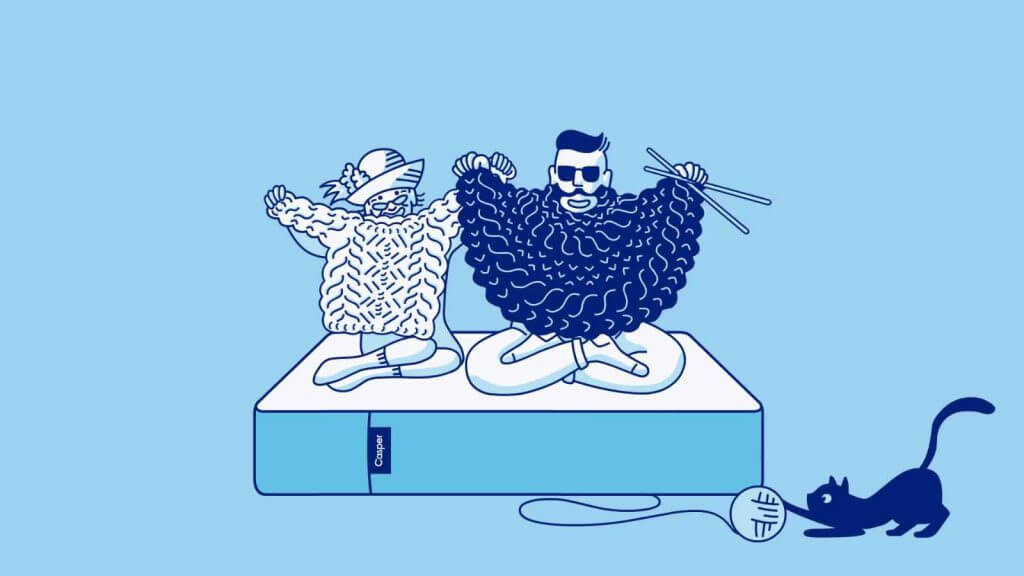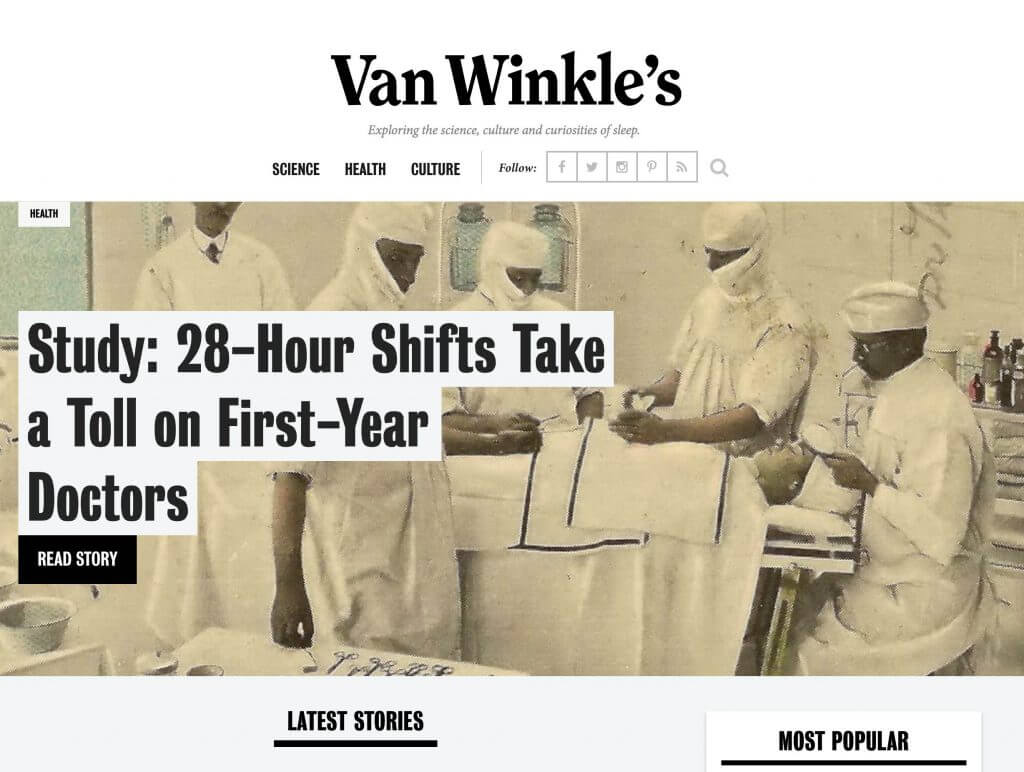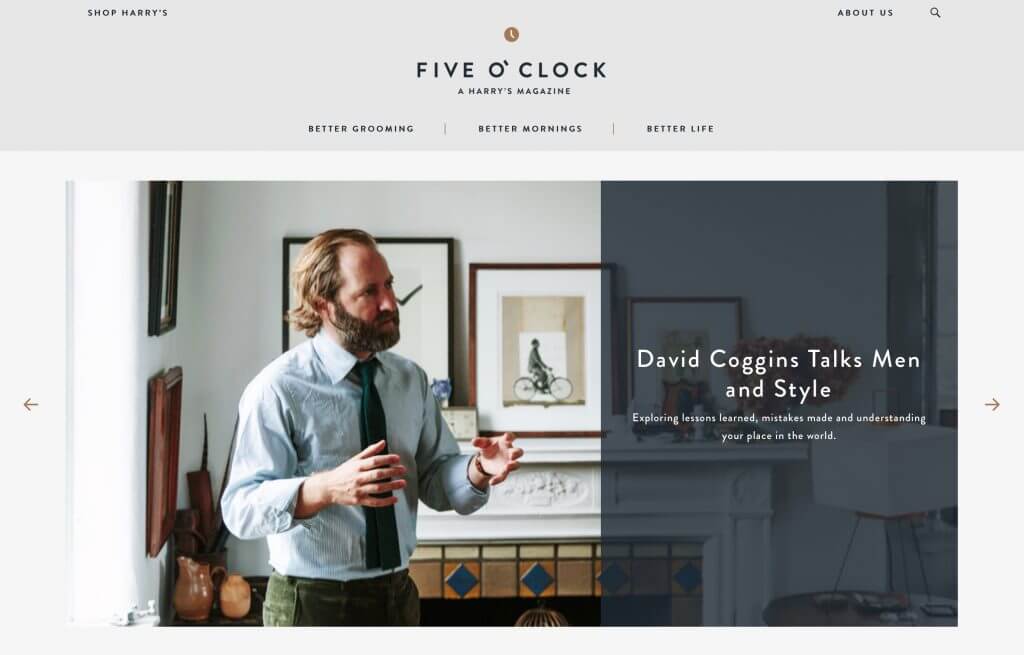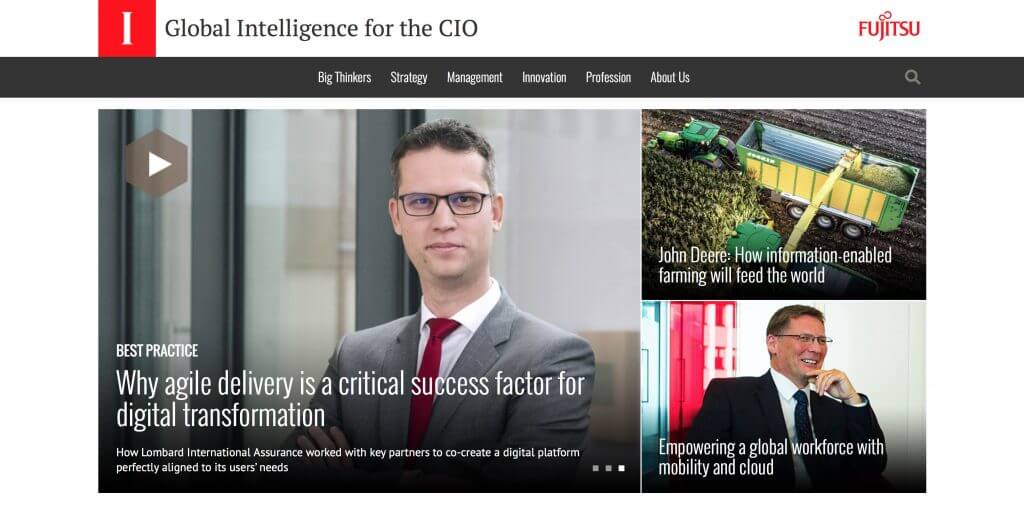 Insight Why top brands are rushing to build online publications
Insight Why top brands are rushing to build online publications
“My parents were looking for a mattress to buy and I recommended Casper.
It’s the first thing that came to mind because
you’ve spoken about them so much.”
That’s what our MD, Richard, said to me a few months ago. I’m not sure if his parents went for Casper in the end. Nevertheless, this is a common thing that happens — family, friends, co-workers etc. recommend products and services based on their experiences of what they hear, see, and feel.
Funnily enough, I don’t own a Casper mattress. So why would I talk about them so much?
Because their content is awesome.
Casper, the sleep company
Let’s face it, if you were tasked to produce content about mattresses you’d be spending a lot of time staring at a blank page. Casper made sure they didn’t go down this road. Instead, they declared themselves a “sleep company”, and that proved to be a smart move.
The topic of sleep is fascinating. We all sleep and we could probably all do with learning more about it, like ‘Should Night Owls Just Try to Become Morning People?’ or ‘Does Your Sleep Schedule Fall Apart on the Weekend? Go Camping.’
Interesting, right?
These articles are from Casper’s online publication called… wait for it…
Van Winkle’s — Exploring the science, culture and curiosities of sleep.
Van Winkle’s is independent from Casper, and they’re not allowed to write about mattresses. Jeff Koyen then-editor in chief said “The idea was to create sleep as an editorial vertical, much like fitness or shelter,” says Koyen. “I wanted to get Van Winkle’s readers to think about sleep, and the rising tide would benefit Casper.” Sandra Upson, Backchannel.
This is most definitely a disruptive tactic — a mattress company acting oppositely to what you’d expect from a mattress company. Who ever remembers the name of their mattress? Well, you’re likely to remember Casper.


As their co-founder and chief creative officer, Luke Sherwin, says:
“Great brands don’t just ride shifts in culture, they contribute to them”
and…
“Smarter brands in general realize that their products are just enablers to a lifestyle — changing the lifestyle itself can be more profitable than any change to your product.”
Casper aren’t the only ones playing in this space.
Five O’Clock, A Harry’s Magazine
Harry’s is a razor company, but like Casper, they don’t meet the conventional standards of a typical company in their industry. They have an acute focus on content with their meticulous online magazine, Five O’Clock.
Their editor describes the publication as follows:
“So we created Five O’Clock for guys like us, everyday Harrys in pursuit of making today better than yesterday. It’s a place where we can discover new perspectives, and learn from each other’s experiences.”
This aspirational angle is important when communicating with people. Anthony Hopkins’ character, Dr. Ford, makes this point in the TV series, Westworld:
“Dr. Ford turns the proposal down flatly. The guests aren’t “looking for a story that tells them who they are,” he chastises Sizemore. “They already know who they are. They’re here because they want a glimpse of who they could be.”
Selling dreams is a big part of marketing, however, it must feel authentic. Five O’Clock does this in a subtle way by giving the reader a glimpse into the morning routines of people who we may draw inspiration from. As their editor explains, Five O’Clock aims “to share undiscovered moments, advice, and generally useful information to help you live a well-groomed life.”
You may be thinking “oh I bet all these people conveniently use Harry’s razors when presenting to the cameras their morning shave” — well, most of the time they’re not using Harry’s razors but instead a different brand. It’s not a sales-y approach, and that’s what makes an online publication work — it shouldn’t feel like it’s selling to you but instead, make you feel like you’re gaining value from the content. It should fit in with your lifestyle and help inspire you to be the person you want to be.
This isn’t limited to B2C either, the B2B world are keen to get in on the action.
I – Global Intelligence for the CIO by Fujitsu
When it comes to producing content, knowing who the content is for is fundamental.
In this case, the audience are chief information officers (CIOs). They make important decisions every day and require a deep understanding of the trends to help inform their buying decisions. Fujitsu worked alongside Seven, a digital content marketing agency, to create I – Global Intelligence, a content site that provides insights on Information and Communications Technology (ICT) trends and their impact on global business and society.
This platform has become a hub for CIOs around the world, where they can learn from the high-profile CIOs who contribute regularly with interesting viewpoints and tips. 10,000 unique readers consume 32,000 pages each month on the site. By building authority in this space, Fujitsu indirectly reinforce their brand as a leader in the ICT industry.
You can refer to this as a “jab, jab, jab, right hook” analogy that Gary Vaynerchuk, a well known social media agency entrepreneur, speaks about in his book, where he explains that giving valuable content is in essence a jab — you throw our 3 to 4 jabs and then the right hook is the call to action (CTA). This approach is as relevant to B2B as it is in a more commonly referred to consumer space.
Conclusion: Word of Mouth triumphs all marketing
The best marketing you can hope for is word of mouth. Nothing beats someone telling their friend or colleague “Hey, you should check this out, it’s super helpful/useful/interesting.” This could be in the form on brand advocacy, where you build a strong following of people who speak highly of your brand and convince those around them to buy or use your product or service.
Remember the story at the beginning of this post? I was effectively a brand advocate for Casper and that led to Richard recommending them to his parents, and you don’t just recommend anything to your parents.
For those of you wondering how you measure this — well, it’s not easy. By building positive sentiment around your brand, your message is easier to communicate as people actively look out for your content amongst all of the other content fighting for your attention.
A high quality product or service will generate word of mouth, but in today’s information-connection age, you’ll need a bit more than that.



